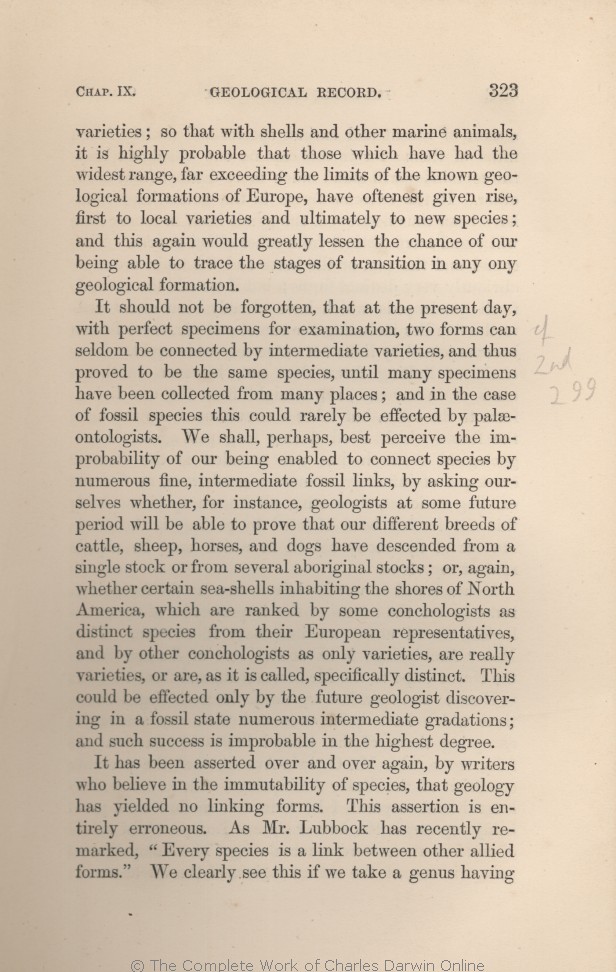varieties; so
that | that 1859 1860 1861 | | that, 1866 1869 1872 |
| highly probable that 1861 1866 |
| probably 1859 1860 |
| probable 1869 1872 |
| those which have 1859 1860 1861 1866 |
| that those which have 1869 |
| that those which 1872 |
| ..... 1861 1866 1869 1872 | | which 1859 1860 |
| ony 1861 | | one 1859 1860 1866 1869 1872 |
| 1 blocks not present in 1859 1860 1861; present in 1866 1869 1872 | | It is a more important consideration, clearly
leading to the same result, as lately insisted on by Dr. Falconer, namely, that the periods
during which species have been undergoing
modification, though very
long as measured by years, have probably been
short in comparison with the periods
during which these same species
remained without undergoing any change.
|
|
It should not be forgotten, that at the present day, with perfect specimens for examination, two forms can seldom be connected by intermediate
varieties, | varieties, 1861 1866 1869 1872 | | varieties 1859 1860 |
| have been 1859 1860 1861 1866 | | are 1869 1872 |
| in the case of 1859 1860 1861 1866 1869 |
| with 1872 |
| could 1859 1860 1861 1866 | | can 1869 1872 |
| effected by palæontologists. 1859 1860 1861 1866 1869 |
| done. 1872 |
| numerous 1861 1866 1869 | | numerous, 1859 1860 1872 |
| intermediate 1861 1866 1869 | | intermediate, 1859 1860 1872 |
| OMIT 1860 1861 1866 1869 1872 |
| CHAP. IX. GEOLOGICAL RECORD. 1859 |
| our-selves 1861 1866 | | ourselves 1859 1860 1869 1872 |
| prove 1861 1866 1869 1872 | | prove, 1859 1860 |
| have 1859 1860 1861 1866 | | are 1869 1872 |
| only 1859 1860 1861 1869 1872 |
| distinct species from their European representatives, and by other conchologists as only 1866 |
| varieties, 1861 1866 1869 1872 | | varieties 1859 1860 |
| only by the future geologist 1859 1860 1861 1866 1869 |
| by the future geologist only by his 1872 |
| gradations; 1859 1860 1861 1869 1872 | | gra- dations; 1866 |
| is 1861 1866 1869 1872 |
| seems to me 1859 1860 |
|









